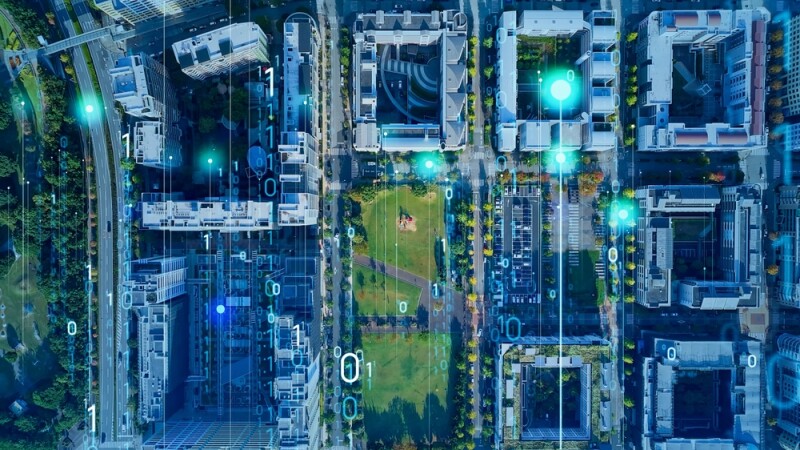Geo Week News, and of course the annual Geo Week Conference, is broadly highlighted by the increasingly coming together of different technologies. About a half-decade ago, we began seeing the convergence of reality capture, surveying, and AEC and built our brand around that idea of, in essence, being that intersection between the geospatial industry and the built world. In the time since, that idea of convergence has only become stronger as developments in the technologies that touch all of these spaces have become more accessible and allowed this sort of “cross-pollination” to grow in strength.
A lot of the time, this comes in the form of hardware. Tools like laser scanners and UAVs were once the domain of specific professionals – often surveyors – but have recently become easier to use and/or cheaper to acquire. This, in turn, has led to new use cases – think, historical preservation as one example – as well as industries like AEC taking further advantage of the tools in many different forms. These are trends that are not slowing down, making it more exciting with each passing year to be around these groups coming together.
It’s not just the hardware side that is experiencing this spread of influence across sectors. Increasingly, we are seeing some of the back-office areas experience some cross over as well. GIS professionals, for example, are about as geospatial-focused as a profession can be, but their presence in AEC projects with respect to digital twins are becoming more important than ever.
Digital twin technology, as we speak about frequently in this space, has been trending significantly upward over the last few years. Once seen as simply a buzzword (and an overused one, at that), other developments have turned that idea on its head and turned them into actualized tools that are keys to many workflows. Between the improvement in reality capture capabilities, as well as the decreasing price, along with the sudden boom around AI capabilities – which has big implications for digital twin functionality – the cycle has shifted completely from hype to tangible uses. And now as that momentum continues and more use cases come up, tying in that geographic component is becoming even more crucial.
To be clear, there are still functionalities for digital twins – generally for smaller facilities or even just individual parts of a facility – where the GIS piece is more of a nice-to-have than a necessity. But increasingly, that expertise is necessary to garner the most value out of the digital twin. In fact, this was the topic of a recent webinar put together by the Digital Twin Consortium (DTC) entitled The Critical Role of GIS, Geolocation, and Spatial Analytics for Digital Twins. Featuring Director of AEC Industry Solutions for Esri Marc Goldman and Geospatial Consultant with Motivf Dan Feinberg, the webinar focused on the “pivotal” role of these tools in the “development and optimization” of digital twins.
The conversation touched on some of the ways that this space has grown in a way that makes this geographic insight crucial for the overall value provided by the twins. As part of hammering this point home, they pointed to the Digital Twin Capabilities Periodic Table, developed by the DTC. Of the 61 total capabilities on the table, they pointed to 24 that specifically rely on some sort of geospatial context.
Really, this specific example is a perfect showcase of how not only the growth of tools, but the growth of skills is bringing these industries together. GIS professionals are not really who one would think of as a perfect fit to work alongside an asset or facility manager, but with the advent of digital twins there is a lot of overlap. Both areas, for example, deal with a lot of disparate data, bringing everything together in a way that is both easily digestible and extremely insightful. Additionally, oftentimes they also both involve taking that data and simulating potential future outcomes. And of course, as digital twin capabilities grow and creation becomes simplified, larger areas like cities and counties can create their own digital twins which in turn require that precise geographic context to ensure all data is usable.
In the aforementioned webinar, Goldman and Feinberg run through some of the potential use cases for this intersection of GIS and digital twins, and as one might imagine they really run the gamut. For example, they point to the planning twin, which really ties back to that idea of an urban digital twin through which cities can run their planning. They also point to digital twins for environmental practices, and of course operations of a facility, among plenty of others.
Whether it’s for a full “metaverse” that so thoroughly took over the mainstream consciousness a few years ago or for smaller but still powerful use cases, digital twins are going to become more important and setting up these “virtual environments” in a geographic context is going to be crucial to extracting maximum value. If digital twin users aren’t already thinking about this, they certainly need to start, and similarly GIS professionals need to be aware of this growing opportunity.






.jpg.small.400x400.jpg)

